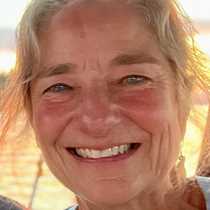Sitkoh Bay, Kelp Bay
Before breakfast the ship entered Sitkoh Bay, at the southeast corner of Chichagof Island. Along the bay’s southern shores there are a few old piers and buildings – remains of an old salmon cannery. The ship quietly progressed further into the bay. We caught glimpses of two brown bear cubs as they romped and played in the tall grass at the forest edge before their mother lured them back into the forest.
We went ashore at Florence Cove, and walked through forest that had been logged four decades ago; we saw tall, rotting stumps where choice Sitka spruce trees had been cut. Some huge trees still grew, and one had an enormous burl on it! As we explored, we discovered banana slugs on the ground, edible berries, and fresh bear scat. We savored our last walk ashore – tasting sweet, red huckleberries, feeling soft mosses underfoot, listening to the odd sounds of ravens. Many of us kayaked in the late morning.
After lunch, Dr. Fred Sharpe visited from his research vessel Evolution. He answered questions about his research on the cooperative bubblenet feeding that humpback whales use here in Southeast Alaska.
The National Geographic Sea Lion cruised south in Chatham Strait, and entered Kelp Bay, passing harbor seals resting on algae-covered rocks. We cruised into the South Arm of the bay and found even more seals, bald eagles too, at the marsh at the head of the bay. The surroundings were quiet -- serene, really. There were small patches of snow high above in the mountains, and thin, waterfall ribbons spilling down tall, green mountains to sea level. We explored the North Arm of the bay, and there were more bald eagles and more seals.
For me, there is one definition of Alaska: more . . . bigger . . . wilder. Whether looking at endless natural scenery, touching soft mosses, looking on the trail for bears (or banana slugs), when one is in Alaska, one has all five senses fully alive!




